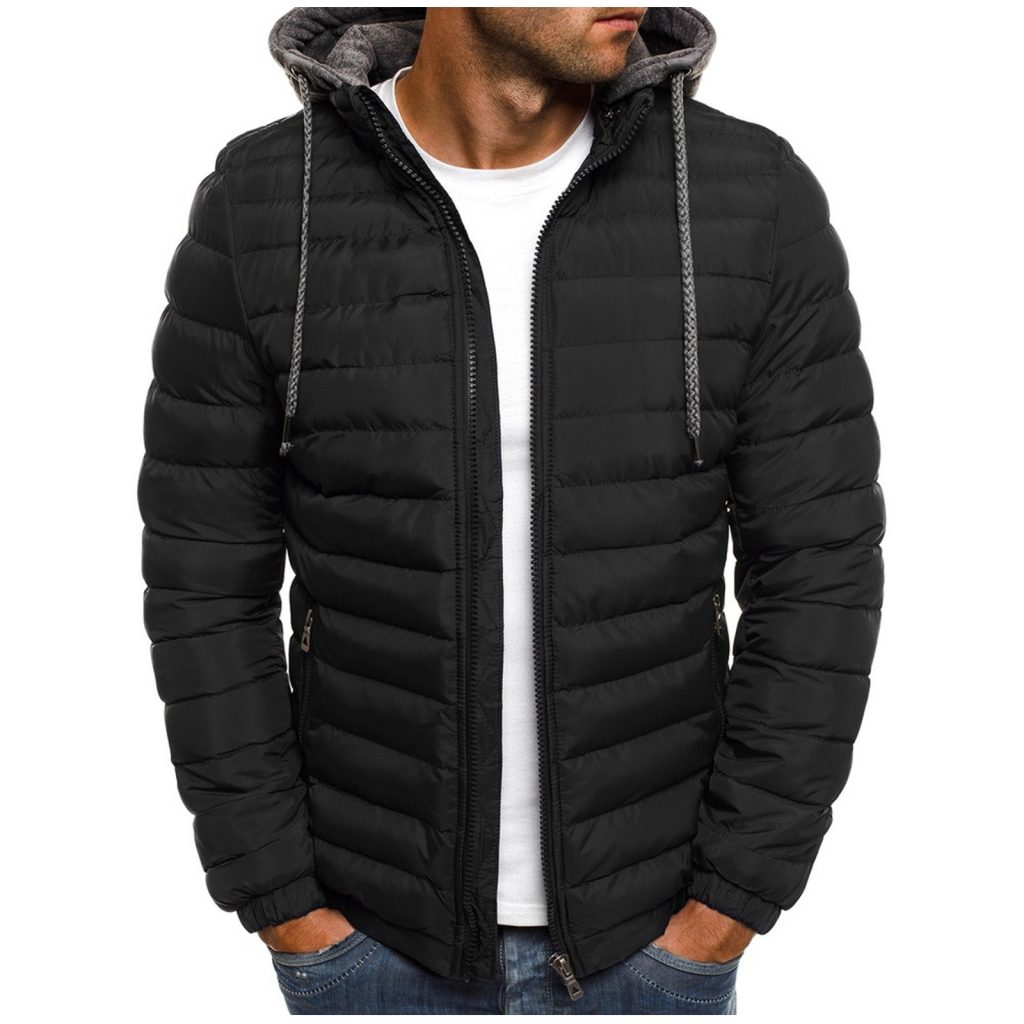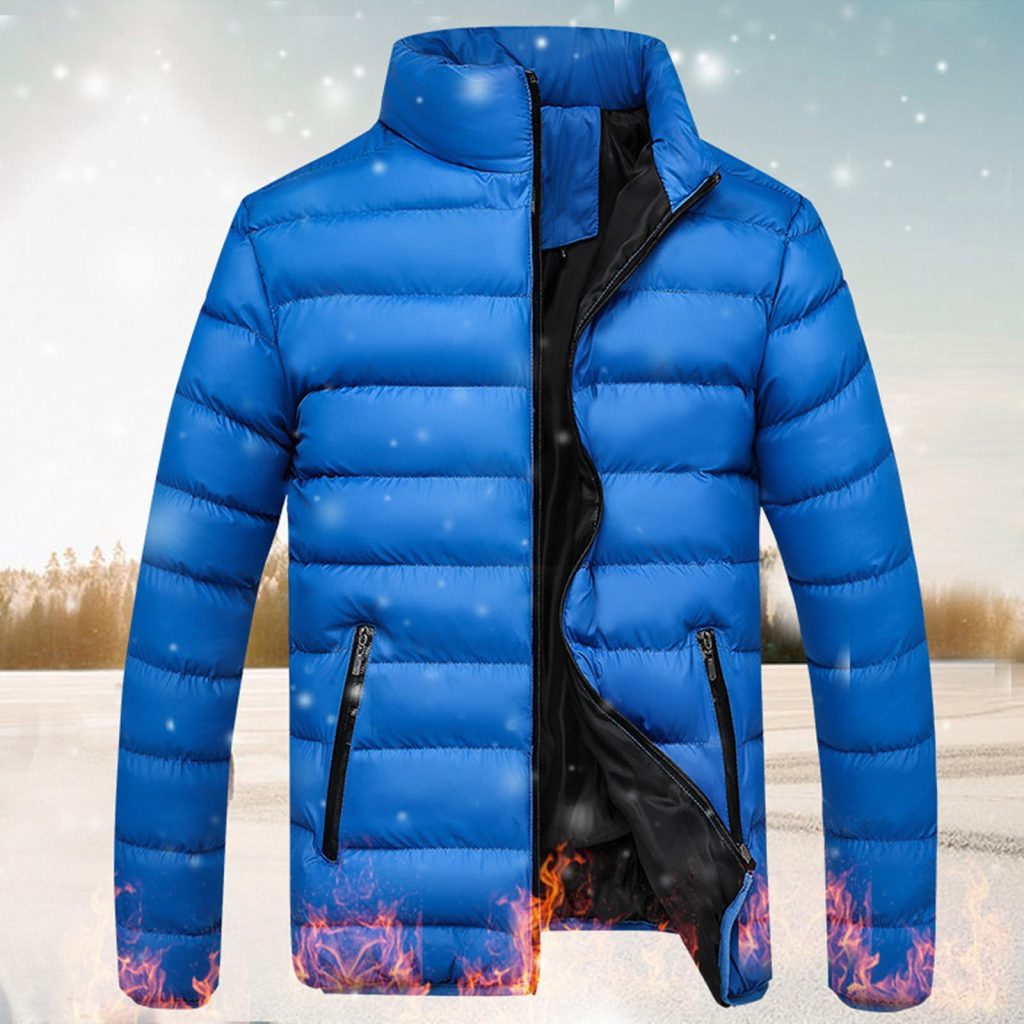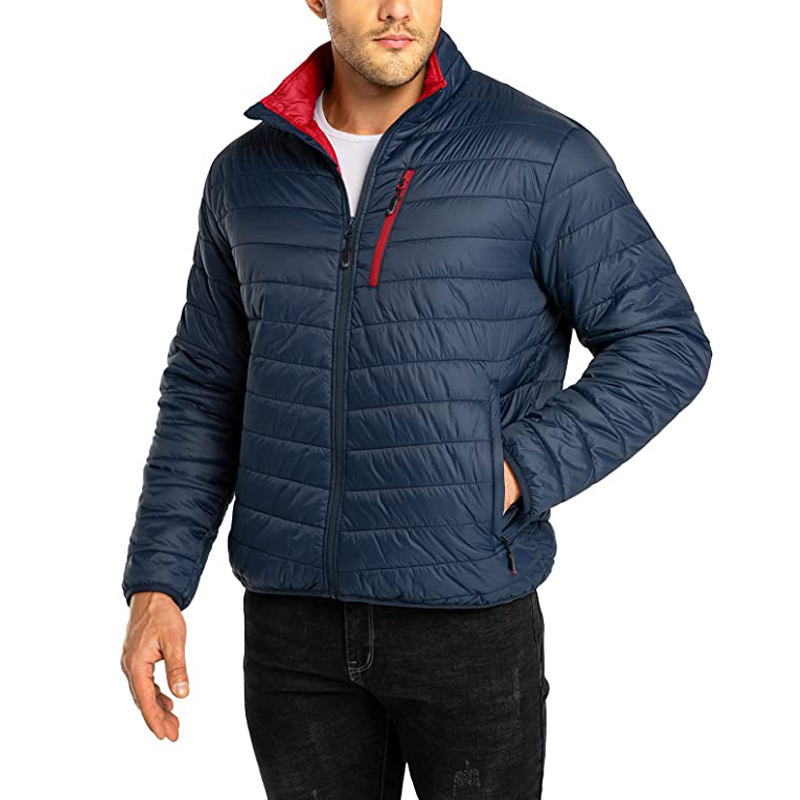Are puffer jackets warm? Puffer jackets are a popular and widely used type of outerwear, especially during the cold winter months. Their unique design and insulation make them not only fashionable but also incredibly warm. In this article, we will explore the warmth and insulation of puffer jackets, as well as their history, materials, and how they compare to other types of outerwear.

History of Puffer Jackets
The puffer jacket, a staple in cold-weather fashion, has a rich history that combines functionality, innovation, and style. Its origins trace back to the need for warmth and protection in extreme conditions, but over time, it has evolved into a versatile garment embraced by outdoor enthusiasts and fashionistas alike.
Origins of the Puffer Jacket
-
Early Beginnings:
- The concept of trapping heat using quilted fabrics dates back centuries. Quilting was traditionally used in garments like medieval armor padding and equestrian wear to provide insulation and durability.
- However, the modern puffer jacket as we know it began taking shape in the early 20th century.
-
Eddie Bauer’s Breakthrough (1936):
- The puffer jacket’s invention is often credited to Eddie Bauer, an American outdoorsman and entrepreneur. After nearly succumbing to hypothermia during a fishing trip, Bauer sought to create a garment that could withstand freezing temperatures.
- In 1936, he introduced the “Skyliner”, the first quilted, down-filled jacket. It featured a revolutionary design with stitched compartments to hold goose down insulation, preventing the feathers from shifting and ensuring even warmth distribution.
- This innovation not only kept wearers warm but also set the foundation for modern insulated outerwear.
Adoption in Extreme Environments
-
Military Use:
- During World War II, the U.S. military recognized the value of insulated jackets for soldiers operating in cold climates. Eddie Bauer collaborated with the military to produce the B-9 Flight Jacket, which became standard issue for pilots and aircrew.
- These jackets were lightweight yet incredibly warm, making them ideal for high-altitude missions.
-
Mountaineering and Exploration:
- In the mid-20th century, puffer jackets gained popularity among mountaineers and explorers. Their ability to provide warmth without excessive bulk made them essential for scaling peaks and enduring harsh conditions.
- Brands like The North Face and Patagonia later adopted and refined the design, incorporating advanced materials and sustainable practices.
Fashion Evolution
-
Mainstream Popularity:
- By the 1970s and 1980s, puffer jackets transitioned from purely functional gear to fashionable outerwear. Designers began experimenting with colors, silhouettes, and finishes, making them appealing to urban consumers.
- Luxury brands like Moncler played a significant role in elevating the puffer jacket’s status, blending high-performance materials with sleek designs.
-
Streetwear and Cultural Impact:
- In the 1990s and 2000s, puffer jackets became synonymous with streetwear and hip-hop culture. Oversized, bold designs were embraced by artists and trendsetters, cementing the jacket’s place in popular fashion.
- Today, puffer jackets are a seasonal wardrobe staple, available in a wide range of styles—from minimalist and tailored to avant-garde and oversized.
Modern Innovations
-
Sustainable Materials:
- As environmental concerns have grown, many brands have shifted to using recycled fabrics and synthetic down alternatives to reduce reliance on animal products and minimize waste.
- Companies like Patagonia and Columbia have pioneered eco-friendly insulation options, such as plant-based or recycled polyester fills.
-
Technological Advancements:
- Modern puffer jackets often incorporate advanced features like water resistance, windproofing, and breathable membranes to enhance performance in diverse weather conditions.
- Lightweight, packable designs make them convenient for travel and layering.
Key Takeaways
- The puffer jacket was originally designed for extreme cold weather and outdoor activities like skiing and hiking.
- Eddie Bauer’s down-filled “Skyliner” in 1936 marked the birth of the modern puffer jacket.
- Over time, the jacket evolved from a functional garment for military and exploration to a fashion icon embraced by mainstream and luxury markets.
- Today, puffer jackets combine style, sustainability, and technology, making them a versatile choice for both practicality and aesthetics.
The puffer jacket gained popularity in the 20th century, particularly in the 1980s and 1990s, when outdoor and sportswear became a fashion trend. It was during this time that puffer jackets became more than just functional outerwear—they became a fashion statement. Today, puffer jackets are commonly seen on runways, in urban street style, and in outdoor sports.
Materials and Insulation
One of the key components of puffer jackets that makes them warm is their insulation. Puffer jackets are typically filled with down, synthetic fibers, or a combination of both. Down is the layer of fine feathers found under the tougher exterior feathers of ducks and geese. It is known for its ability to trap heat, making it an excellent insulator. Synthetic fibers, such as polyester and nylon, are also commonly used in puffer jackets and provide similar insulation properties to down.
The outer shell of puffer jackets is often made of nylon, which is lightweight and water-resistant, making it an ideal material for outdoor use. Some puffer jackets also feature a durable water-repellent (DWR) finish, which adds an extra layer of protection against moisture and helps to keep the wearer dry and warm.
The Warmth of Puffer Jackets
Puffer jackets are beloved for their warmth and ability to withstand cold temperatures. The insulation found in puffer jackets traps and retains body heat, creating a warm and cozy environment for the wearer. In addition, the quilted design of puffer jackets helps to distribute the insulation evenly, preventing cold spots and maintaining a consistent level of warmth.
The warmth of a puffer jacket can vary depending on the type and amount of insulation used. Down insulation, for example, is known for its excellent heat retention and can provide exceptional warmth even in sub-zero temperatures. Synthetic insulation, while slightly less effective at trapping heat, is still capable of keeping the wearer warm in cold weather conditions.

Advantages of puffer jackets warm
Puffer jackets, also known as quilted jackets or down jackets, are celebrated for their exceptional warmth and versatility. These jackets have become a staple in cold-weather wardrobes due to their unique design and functionality. Below, we explore the key advantages of puffer jackets and why they are an excellent choice for staying warm in chilly conditions.
Down Fill
- Natural Down: Puffer jackets filled with goose or duck down are renowned for their ability to trap heat effectively. Down clusters create small air pockets that retain body heat, providing unparalleled warmth without adding bulk.
- High Warmth-to-Weight Ratio: Down is incredibly lightweight yet offers excellent thermal efficiency, making it perfect for extreme cold conditions.
Synthetic Fill
- Moisture Resistance: Synthetic insulation, such as polyester fibers, mimics the warmth of down but performs better in wet conditions. It retains heat even when damp, making it a practical choice for rainy or snowy environments.
- Affordability: Synthetic-filled puffer jackets are often more budget-friendly than down-filled options while still offering reliable warmth.
Comparing Puffer Jackets to Other Outerwear
When it comes to warmth, puffer jackets are often compared to other types of outerwear, such as wool coats, parkas, and fleece jackets. Each type of outerwear has its own insulation and warmth properties, making them suitable for different weather conditions and activities.
Wool coats, for example
Are known for their excellent insulation and are often used for formal or business attire. They are warm and elegant, making them a popular choice for winter wear. Parkas, on the other hand, are heavy-duty outerwear designed for extreme cold and outdoor activities. They often feature additional insulation, such as fur lining or synthetic fibers, to provide maximum warmth.
Fleece jackets, while not as warm as puffer jackets, are a lightweight and versatile option for mild to moderate cold weather. They are often used as a mid-layer under a shell jacket or on their own in cool weather. Puffer jackets, with their unique combination of insulation and lightweight design, offer a balance of warmth, comfort, and style that makes them a popular choice for everyday wear.
How to choose the puffer jackets that suit you
When the weather turns cold, there’s nothing better than slipping into a warm and cozy puffer jacket. Puffer jackets come in a variety of styles, colors, and sizes, making it easy to find the perfect one for you. However, with so many options available, it can be overwhelming to choose the right puffer jacket for your needs.
Understanding Puffer Jackets
Puffer jackets, also known as quilted jackets, are characterized by their signature quilted pattern and insulation, typically made from down or synthetic materials. The insulation helps to trap body heat and keep you warm, making puffer jackets an essential item for cold weather. Puffer jackets are available in a range of styles, from lightweight and packable options to heavier, more insulated designs. Understanding the different types of puffer jackets can help you narrow down your options when choosing the right one for you.
Consider Your Needs
Before you start shopping for a puffer jacket, it’s important to consider your specific needs. Are you looking for a jacket to wear during outdoor activities, such as hiking or skiing? Or do you need a stylish and warm jacket for everyday wear? By identifying your specific needs, you can narrow down your options and focus on finding a puffer jackets with bottoms that meets your requirements.

Fit and Comfort
When trying on puffer jackets, pay close attention to the fit and how comfortable it is to wear. The jacket should fit well and allow for easy movement, without feeling too tight or restrictive. Look for puffer jackets with adjustable features, such as drawstrings or elastic cuffs, that can help customize the fit to your body. Additionally, consider the weight of the jacket and how it feels when worn. Some puffer jackets are lightweight and packable, while others are heavier and provide more insulation. Choose a jacket that feels comfortable and suits your lifestyle.
Insulation Type
Puffer jackets are available with two main types of insulation: down and synthetic. Down insulation is made from the soft feathers of ducks or geese and is known for its exceptional warmth and breathability. However, down insulation can be more expensive and may not perform as well in wet conditions. Synthetic insulation, on the other hand, is made from polyester fibers and is often more affordable than down. Synthetic insulation is also water-resistant and can provide warmth even when wet. Consider the climate and conditions in which you’ll be wearing your puffer jacket to determine the best insulation type for you.
Weather Resistance
If you live in an area with frequent rain or snow, it’s important to choose a puffer jacket that offers weather resistance. Look for jackets with a durable water-repellent (DWR) finish, which helps to repel moisture and keep you dry. Additionally, consider the design of the jacket, such as a hood, adjustable cuffs, and a high collar, which can help protect you from the elements. Some puffer jackets are also designed with windproof materials, which can be beneficial in cold and blustery conditions.
Style and Design
Puffer jackets come in a wide range of styles and designs. So take the time to find one that suits your personal style. Whether you prefer a classic and timeless look or something more modern and trend-driven. There’s a puffer jacket to match your aesthetic. Consider details such as the length of the jacket. The placement of pockets, and the overall silhouette. Additionally, think about the color and pattern of the jacket. As this can also impact the overall look and feel of the garment.
In conclusion
Puffer jackets are indeed warm and effective at keeping the wearer comfortable in cold weather. Their insulation, quilted design. And durable materials make them a practical and stylish choice for winter outerwear. Whether you’re hitting the slopes or braving the city streets. A puffer jacket is a reliable and fashionable option for staying warm and cozy.

How to clean puffer jackets warm
Puffer jackets, known for their warmth and insulation, are a staple in many wardrobes, especially during colder months. However, maintaining their functionality and appearance requires proper care and cleaning. Over time, dirt, sweat, and oils can accumulate on the fabric, compromising the jacket’s performance and reducing its lifespan. Cleaning your puffer jacket not only keeps it looking fresh but also ensures that its insulation remains effective. In this guide, we’ll explore the best methods for cleaning puffer jackets, including preparation, washing techniques, drying tips, and storage advice.
Why Proper Cleaning is Essential
Before diving into the cleaning process, it’s important to understand why puffer jackets require special attention. These jackets are typically filled with down feathers or synthetic fibers, which trap air to provide insulation. If the outer fabric becomes dirty or greasy, it can affect the jacket’s breathability and water resistance. Additionally, dirt and oils can seep into the insulation, causing clumping and reducing its ability to retain heat. Regular cleaning helps maintain the jacket’s structure, prevents odors, and extends its durability.
Preparation Before Cleaning
Proper preparation is key to ensuring a successful cleaning process. Follow these steps before you begin:
Step 1: Check the Care Label
Every puffer jacket comes with a care label that provides specific instructions from the manufacturer. Always check this label first to determine whether the jacket is machine washable or if it requires dry cleaning. Some high-end jackets may have delicate materials that need professional care.
Step 2: Gather Necessary Supplies
You’ll need the following items:
- Mild detergent (preferably one designed for down or synthetic fabrics)
- A large-capacity washing machine (front-loading is ideal to prevent damage to the jacket)
- Tennis balls or dryer balls
- A clean bathtub (if hand-washing is required)
- A hanger for air-drying
Step 3: Pre-Treat Stains
If your jacket has visible stains, pre-treat them before washing. Use a small amount of mild detergent or a stain remover and gently rub it into the affected area with a soft brush or cloth. Avoid harsh chemicals or bleach, as they can damage the fabric.
Washing Your Puffer Jacket
There are two main methods for washing a puffer jacket: machine washing and hand washing. Both methods are effective, but the choice depends on the jacket’s material and your personal preference.
Machine Washing
- Set the Washer:
- Use a front-loading washing machine if possible, as top-loading machines with agitators can damage the jacket.
- Select a gentle or delicate cycle with cold water to prevent shrinking or damaging the insulation.
- Add Detergent:
- Pour a small amount of mild detergent into the detergent compartment. Avoid using fabric softeners, as they can leave residues that interfere with the jacket’s water-repellent properties.
- Place the Jacket in the Machine:
- Zip up all zippers, fasten Velcro straps, and turn the jacket inside out to protect the outer fabric.
- Place the jacket loosely in the drum to allow water and detergent to circulate evenly.
- Run the Cycle:
- Start the wash cycle and let it complete. For heavily soiled jackets, run an additional rinse cycle to ensure all detergent is removed.
Hand Washing
- Fill the Tub:
- Fill a bathtub or large basin with lukewarm water. Add a small amount of mild detergent and mix it thoroughly to create suds.
- Submerge the Jacket:
- Place the jacket in the water and gently press it down to ensure it’s fully submerged. Avoid twisting or wringing the jacket, as this can damage the insulation.
- Agitate Gently:
- Use your hands to gently agitate the jacket, focusing on areas with visible dirt or stains. Let it soak for about 15–20 minutes.
- Rinse Thoroughly:
- Drain the soapy water and refill the tub with clean, lukewarm water. Rinse the jacket multiple times until all soap is removed.
Drying Your Puffer Jacket
Drying is a critical step in maintaining the jacket’s loft and insulation. Proper drying ensures that the filling regains its fluffiness and warmth.
Using a Tumble Dryer
- Select the Right Settings:
- Use a low-heat or air-dry setting to avoid overheating, which can damage the fabric and insulation.
- Add Tennis Balls or Dryer Balls:
- Place two or three tennis balls or dryer balls in the dryer along with the jacket. As the dryer tumbles, these balls will help break up clumps in the insulation and restore the jacket’s loft.
- Dry Completely:
- Check the jacket periodically to ensure it’s drying evenly. The process may take several hours, depending on the jacket’s size and material.
Air Drying
- Hang the Jacket:
- Hang the jacket on a sturdy hanger in a well-ventilated area away from direct sunlight, which can cause fading.
- Fluff the Insulation:
- Gently pat and shake the jacket every hour to redistribute the filling and speed up the drying process.
Restoring Water Resistance
Many puffer jackets come with a durable water-repellent (DWR) coating that helps repel moisture. Over time, this coating can wear off due to regular use and washing. To restore it:
- Use a DWR Spray:
- Purchase a DWR spray from an outdoor gear store and apply it according to the instructions. This usually involves spraying the jacket evenly and allowing it to dry.
- Heat Activation:
- After applying the spray, tumble dry the jacket on low heat or use a hairdryer to activate the coating.
Storage Tips
Proper storage is essential to keep your puffer jacket in good condition between uses. Follow these guidelines:
- Avoid Compression: Store the jacket in a cool, dry place without compressing it for extended periods. Compression can damage the insulation over time.
- Use a Breathable Bag: If you must store the jacket in a bag, choose one made of breathable fabric instead of plastic.
- Keep It Dry: Ensure the jacket is completely dry before storing it to prevent mold or mildew growth.
Common Mistakes to Avoid
To maximize the lifespan of your puffer jacket, avoid these common mistakes:
- Using Harsh Chemicals: Bleach, fabric softeners, and strong detergents can damage the fabric and insulation.
- Overloading the Washer: Washing multiple items with the jacket can lead to uneven cleaning and potential damage.
- Skipping the Drying Step: Air-drying alone may not restore the jacket’s loft; always use tennis balls or dryer balls for optimal results.Eco-Friendly Cleaning Tips
For those looking to reduce their environmental impact, consider these eco-friendly practices:
- Use Biodegradable Detergents: Opt for detergents made from natural ingredients that are safe for both your jacket and the environment.
- Wash Less Frequently: Spot-clean minor stains instead of washing the entire jacket regularly.
- Repair Instead of Replace: Patch small tears or holes instead of discarding the jacket.
Cleaning your puffer jacket properly is essential for maintaining its warmth, functionality, and appearance. By following the steps outlined in this guide—preparation, washing, drying, restoring water resistance, and proper storage—you can ensure that your jacket remains a reliable companion for years to come. Remember to tailor your cleaning method to the jacket’s specific material and always refer to the care label for guidance. With the right care, your puffer jacket will continue to provide comfort and style in even the coldest conditions.



